Given an undirected unweighted graph : it may be cyclic and each vertex has given value ,as shown in image.

Find the size of largest Bi-Partite sub-graph (Largest means maximum number of vertices (connected) in that graph) ?
Answer:

The largest graph is the orange-coloured one, so the answer is 8.
My approach:
#define loop(i,n) for(int i=0;i<n;i++)
int vis[N+1];
vector<int> adj[N+1] // graph in adjacency vector list
int dfs(int current_vertex,int parent,int original_value,int other_value){
int ans=0;
vis[current_vertex]=1; // mark as visited
// map for adding values from neighbours having same value
map<int,int> mp;
// if curr vertex has value original_value then look for the neighbours
// having value as other,but if other is not defined define it
if(value[current_vertex]==original_value){
loop(i,adj[current_vertex].size()){
int v=adj[current_vertex][i];
if(v==parent)continue;
if(!vis[v]){
if(value[v]==other_value){
mp[value[v]]+=dfs(v,current_vertex,original,other);
}
else if(other==-1){
mp[value[v]]+=dfs(v,current_vertex,original,value[v]);
}
}
}
}
//else if the current_vertex has other value than look for original_value
else{
loop(i,adj[current_vertex].size()){
int v=adj[current_vertex][i];
if(v==p)continue;
if(!vis[v]){
if(value[v]==original){
mp[value[v]]+=dfs(v,current_vertex,original,other);
}
}
}
}
// find maximum length that can be found from neighbours of curr_vertex
map<int,int> ::iterator ir=mp.begin();
while(ir!=mp.end()){
ans=max(ans,ir->second);
ir++;
}
return ans+1;
}
calling :
// N is the number of vertices in original graph : n=|V|
for(int i=0;i<N;i++){
ans=max(ans,dfs(i,-1,value[i],-1);
memset(vis,0,sizeof(vis));
}
But I'd like to improve this to run in O(|V|+|E|) time. |V| is the number of veritces and |E| is the number of edges and How do I do that?